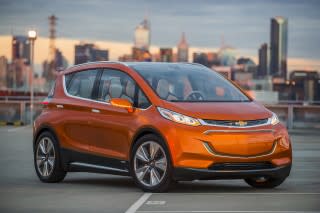Switching The World To Electric Vehicles Will Take Way Longer Than You Think
Increasingly-aggressive emissions targets will soon force automakers to build more plug-in electric cars.
Norway has proposed all but eliminating new internal-combustion car sales by 2025, and a consortium of regional governments called the International ZEV Alliance has proposed to do the same in its jurisdictions by 2050.
But even given those aggressive timetables for new car sales, how long will it be before a large part of the world's billion-plus vehicles are using grid electricity rather than hydrocarbon combustion?
DON'T MISS: Will Electric Cars Become Popular? BP, Exxon Remain Skeptical (Feb 2012)
If laws were passed tomorrow to limit the number of new internal-combustion cars, it would likely take almost two decades to bring half the overall fleet in that jurisdiction to electric propulsion.
No law outright banning operation of any vehicle with a tailpipe has been proposed anywhere, as far as we know, even in Norway.
As fleet-management company FleetCarma points out in a recent blog post, it takes a long time--decades--for even 50 percent of cars to comply with a new law.

Once a new law is passed--one example might be the earliest vehicle emissions standards, passed in 1971 to take effect in 1975--the first step is to start redesigning non-compliant vehicles.
For a law passed at the end of 2015, the earliest manufacturers could put vehicles in showrooms would be 2019 says FleetCarma, based on its own experience with consulting.
But that's just for one model; the process of design and manufacturing and supply-chain preparations must be repeated until every model in a carmaker's lineup is replaced.
ALSO SEE: When Will The Last Gasoline Car Be Built? 2070, Shell Oil Says (Oct 2013)
It generally takes manufacturers five to six years to turn over their entire lineups.

 Yahoo Autos
Yahoo Autos 
